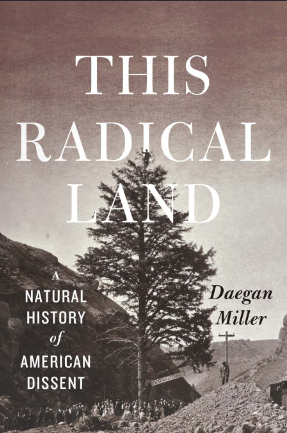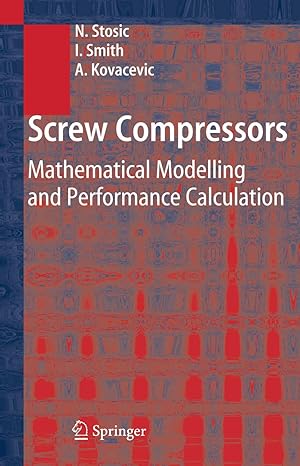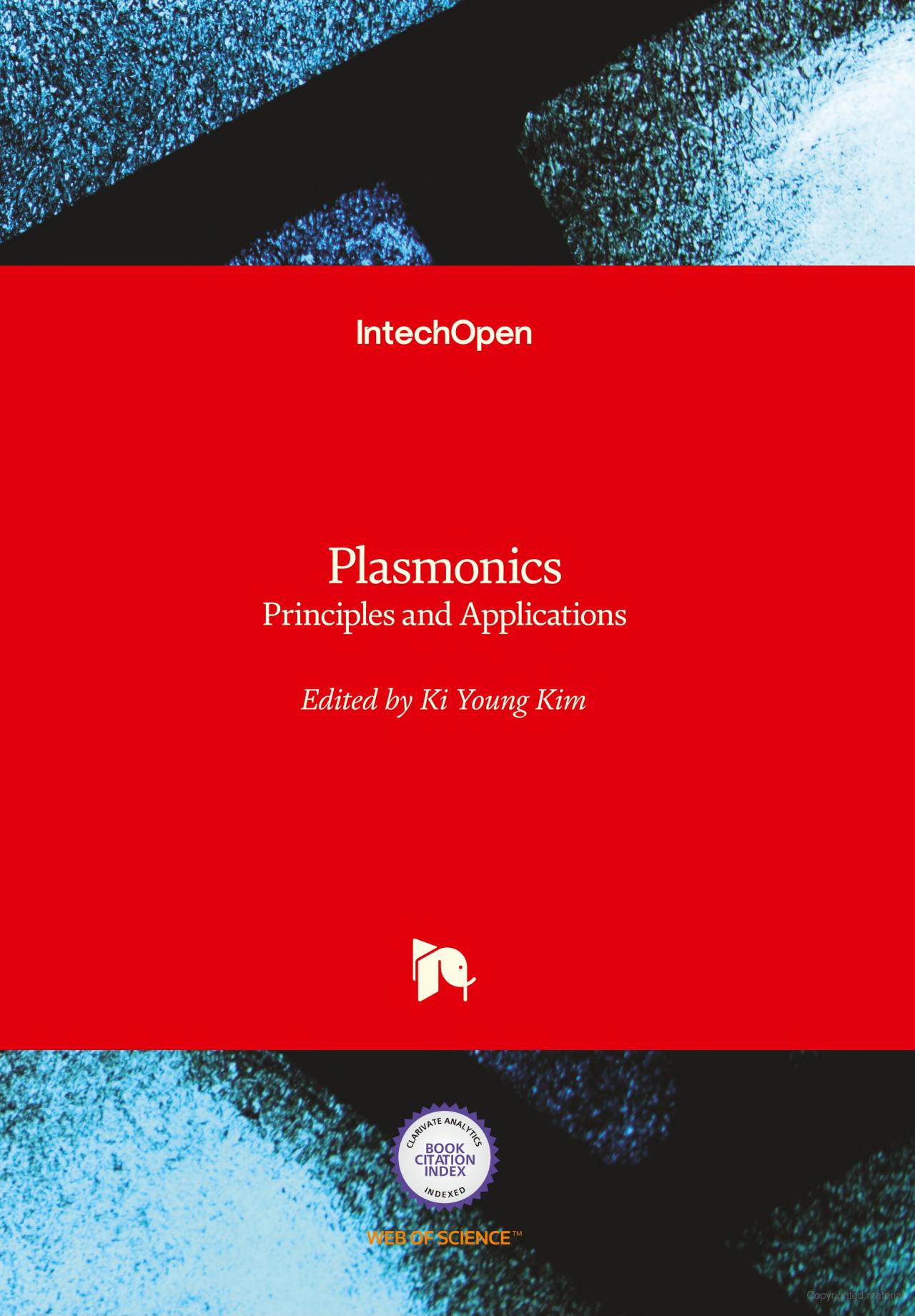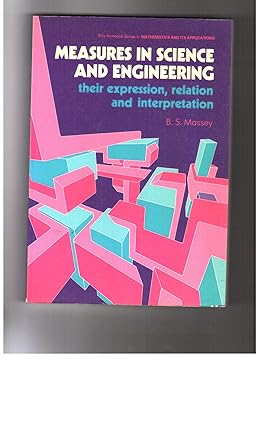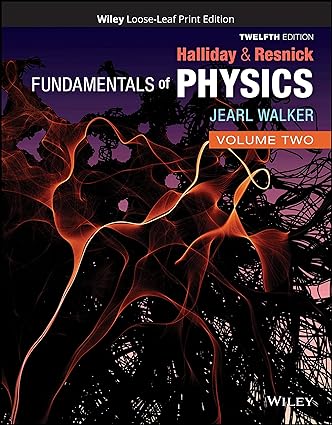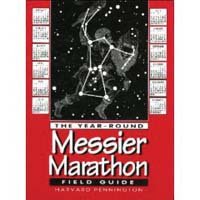It was an era when the improved steam engines of capital were revving hotter and faster, annihilating space and time, sending the jug- gernaut of modernity rocketing into the future, all to the thrill of many Americans. Alexis de Tocqueville, the astute French social critic, caught the spirit of the time during his tour of the United States in the early 1830s: trying to determine why America had no poets worth the name, he argued that their eyes had been “filled with another spectacle.” “The American people sees itself advance across the wilderness,” Tocque- ville continued, “draining swamps, straightening rivers, peopling the solitude, and subduing nature”— though many Americans would have protested that Tocqueville had missed the point. 6 Paper and pen might have been all right for antiquated Europeans whose story had long been written, but modern American poetry was written on the land, using the surveyor’s transit and the pioneer’s ax. The United States, by the mid-nineteenth century, was no longer an exemplary city upon a hill but a mature nation seizing its golden destiny and aided by the preco- cious children of modernity— the quick- as- lightning telegraph and the Figure 1. John Bonner, The Town of Boston in New England (Boston: Fra. Dewing, 1722), Library of Congress. When the Bough Breaks4 unstoppably bullish steam engine— bringing the distant near, conquer- ing nature’s chaos, and chasing away once and for all the dark European aristocratic past with the beacon of democracy. What made this drama seem peculiarly American to commentators on either side of the Atlantic was the starring role of nature. Tocqueville understood it as a wilderness Americans needed to break in their great leap forward, but many in the United States saw the landscape as a thing to perfect: if America was to be the new Eden, then the unruly wilder- ness had to be “improved.” Americans were simply finishing work that a Christian God hadn’t quite gotten around to. Why else would Prov- idence provide limitless space and a bottomless reservoir of natural resources? This was the creation myth of a nation that, above all else, believed in the moral imperative of limitless growth. 7 And so the mid- nineteenth-century was the “age of go-ahead”: the age of capital, an age in which the narrative elements of free space, free resources, free markets, and an exceptional, individualistic, rationally self-interested bootstrap- pulling- up people became the key tenets of the nation’s offi- cial faith in Progress, a trinitarian belief in nature, nation, and capital- ism whose good book was the land itself.8 This all seemed like the birth of something completely new, and the character of American Progress gained an influential spokesman in 1836, when Ralph Waldo Emerson’s Nature broke upon the literary scene. “Our age is retrospective,” it famously begins: “The foregoing genera- tions beheld God and nature face to face; we, through their eyes. Why should not we also enjoy an original relation to the universe. . . . Why should we grope among the dry bones of the past?” A new nature is, in the end, on the New World’s side, Emerson argued, and Americans needed to pay attention to their landscape if the United States was to realize its potential: “Nature, in its ministry to man, is not only the mate- rial, but also the process and the result. All the parts incessantly work into each other’s hands for the profit of man.”9 Even advanced technol- ogy is but “reproductions or new combinations” of natural phenomena. There are all sorts of ways that one could read passages like these (and it is always dicey to pin Emerson down to one interpretation), although the essential point is Emerson’s supreme confidence that nature and When the Bough Breaks 5 the nation will emancipate each other, ushering in a new golden age. “Know then that the world exists for you,” he concluded. “For you is the phenomenon perfect.”10 Yet, the easy celebration of Progress was often tempered by a nag- ging sense of disconnection and growing powerlessness: if everything is always in motion, then how can we ever put down roots? Such anxiety is there, in the guise of ambivalence, in Bonner’s map, which, alongside motion, bespeaks a clear desire for the rootedness symbolized by the elm. Indeed, according to the map’s legend, the city wasn’t founded in 1630; it was planted, and Boston was a city as natural as the American elm. What better way for nineteenth-century Bostonians to reassure themselves that they truly belonged in a land that had only recently been home to a vibrant American Indian culture than to stake a claim to the ancient past with a witness tree? After all, one of the things trees do is hold a shifting world together. In Nature’s Nation trees starred in the stories Americans told them- selves about their place in the world, and this was partly because in this epic whose text was the landscape, the most prominent feature was the continent’s leafy verdure. At the moment of European contact, some- thing like 45 percent— or 850 million acres— of the future contiguous United States was forested, and of that, more than 680 million acres were located east of the Great Plains— the region soon to contain the bulk of the nation’s population. 11 An ocean of trees rolled in an unbroken wave from Maine to eastern Texas, New England to the Deep South, until it broke upon the grassy plains. But even when they were absent, trees were present: the most distinguishing feature of “the vast, bar- ren, and treeless” Great Plains was the region’s lack of trees. 12 Trees also stood out because they were the longest living things a person could encounter. And so while trees are always nonhuman beings “out there,” in the nineteenth-century United States, they were also always profoundly human metaphors that helped Americans make their world make sense.13 But a metaphor, without its surrounding sentence, is merely a lonely word, and a word alone means next to nothing. As with words, wit- ness trees made sense only because they remained rooted in particu- When the Bough Breaks6 lar landscapes, the terrestrial equivalent of a sentence, a paragraph, a book. And like books, landscapes are a mix of the human-made and the natural. Look closely at any landscape that you know well— the backyard with its grass and trees and landscaping; the neighborhood whose poverty was long ago underwritten by marshy ground and fre- quent flooding; the farmed field whose glacial soil is suitable for grow- ing grass but not wheat; the forest scene with its logging trails— and you’ll see a world partly physical but also cultural. Or perhaps you are more at home indoors than out and know landscapes best as paint- ings and photographs, for landscapes need not be physical; they can also exist as maps and essays, poems and travel narratives and music. A landscape, unlike an environment, with its strong scientific conno- tation of the objectively material and scientific, is always a profoundly human creation made out of profoundly nonhuman stuff, and while environments can exist independently of humans, landscapes vanish the moment humans disappear from the scene.14 As Henry David Tho- reau put it in Walden; or, Life in the Woods (1854): “Wherever I sat, there I might live, and the landscape radiated from me accordingly.”15 This means that we can double Thoreau’s sentence back upon itself; we can begin with the landscape and follow it backward to where a per- son lived, where he sat thinking; we can follow the landscape back into a person’s mind and watch as she dreams it into being. Every landscape is ultimately symbolic, its outward appearance a jumbled record of par- ticular human ways of living in and making the world, its shards refract- ing particular ideas about who and what belonged. All landscapes, in other words, are histories, and as histories they can be read, if one can find an introduction. In each of the histories that I recover in this book, a witness tree stands as the central, organizing, orienting landmark that points the way to a forgotten past. Each essay depends upon a tree (or a forest of them), and what unfolds beneath its branches is not the typi- cal tale of American progress, but something more radical: histories of dissent, of freedom, of equality, and of justice. These are the subjects of this book.
چکیده فارسی
دورانی بود که موتورهای بخار بهبودیافتهی سرمایه، داغتر و سریعتر میچرخیدند، فضا و زمان را از بین میبردند، و غارنورد مدرنیته را به سوی آینده پرتاب میکردند، همهی اینها باعث هیجان بسیاری از آمریکاییها میشد. الکسیس دو توکویل، منتقد اجتماعی زیرک فرانسوی، در طول سفر خود به ایالات متحده در اوایل دهه 1830 روح آن زمان را جلب کرد: او در تلاش برای تعیین اینکه چرا آمریکا هیچ شاعری ارزش نامگذاری ندارد، استدلال کرد که چشمان آنها «پر شده بود از یک تماشای دیگر.» توکویل ادامه داد: «مردم آمریکا خود را در سراسر بیابان پیشروی میبینند، باتلاقها را خشک میکند، رودخانهها را صاف میکند، خلوت را مردمی میکند و طبیعت را تحت سلطه خود در میآورد» - اگرچه بسیاری از آمریکاییها اعتراض میکردند که توکویل این موضوع را از دست داده است. 6 ممکن است کاغذ و قلم برای اروپاییهای قدیمی که داستانشان مدتها نوشته شده بود، مناسب باشد، اما شعر مدرن آمریکایی با استفاده از گذر نقشهبردار و تبر پیشگام در زمین سروده شده است. ایالات متحده، تا اواسط قرن نوزدهم، دیگر شهری نمونه بر فراز تپه نبود، بلکه کشوری بالغ بود که سرنوشت طلایی خود را به دست آورده و با کمک فرزندان نابالغ مدرنیته - تلگراف برق آسا و شکل 1 جان بونر، شهر بوستون در نیوانگلند (بوستون: فرا. دیوینگ، 1722)، کتابخانه کنگره. هنگامی که Bough Breaks4 موتور بخار صعودی غیرقابل توقف - دور را نزدیک می کند، بر هرج و مرج طبیعت غلبه می کند و یک بار برای همیشه گذشته تاریک اشراف اروپایی را با چراغ دموکراسی بدرقه می کند. چیزی که این درام را برای مفسران دو سوی اقیانوس اطلس بهطور خاص آمریکایی جلوه میداد، نقش اصلی طبیعت بود. توکویل آن را بهعنوان بیابانی میدانست که آمریکاییها باید در جهش بزرگ خود به جلو بروند، اما بسیاری در ایالات متحده این چشمانداز را چیزی برای تکمیل میدانستند: اگر قرار بود آمریکا عدن جدید باشد، بیابان سرکش باید باشد. بهبود یافته." آمریکایی ها به سادگی مشغول به پایان رساندن کاری بودند که یک خدای مسیحی هنوز به آن نزدیک نشده بود. در غیر این صورت، چرا Providence فضای بی حد و حصر و مخزن بی انتها از منابع طبیعی را فراهم می کند؟ این اسطوره خلقت ملتی بود که بیش از هر چیز به الزام اخلاقی رشد بی حد و حصر اعتقاد داشت. 7 و بنابراین، اواسط قرن نوزدهم "عصر رو به جلو" بود: عصر سرمایه، عصری که در آن عناصر روایی فضای آزاد، منابع آزاد، بازارهای آزاد، و فردی استثنایی، فردگرا و عقلانی خود-خودی مردم علاقه مند به چکمه کشی به اصول کلیدی ایمان رسمی ملت به پیشرفت تبدیل شدند، یک باور تثلیثی به طبیعت، ملت و سرمایه داری که کتاب خوب آن خود سرزمین بود. کاملاً جدید، و شخصیت American Progress در سال 1836، زمانی که طبیعت رالف والدو امرسون در صحنه ادبی مطرح شد، سخنگویی تأثیرگذار به دست آورد. به طور معروف شروع می شود: «عصر ما به گذشته نگر است. ما از چشم آنها چرا ما نباید از یک رابطه اصیل با کیهان لذت ببریم. . . . چرا باید در میان استخوانهای خشک گذشته تاپ بزنیم؟» امرسون استدلال کرد که طبیعت جدید در نهایت در طرف دنیای جدید است و آمریکایی ها باید به چشم انداز خود توجه کنند اگر ایالات متحده می خواهد پتانسیل خود را درک کند: «طبیعت، در خدمتش به انسان، نه تنها مواد، بلکه فرآیند و نتیجه. همه اجزاء بی وقفه به دست یکدیگر کار می کنند تا به نفع انسان باشد.» (9) حتی فناوری پیشرفته هم چیزی جز «تولید مجدد یا ترکیب جدید» پدیده های طبیعی نیست. انواع راههایی وجود دارد که میتوان متنهایی از این قبیل را خواند (و سنجاق کردن امرسون به یک تفسیر همیشه دشوار است)، اگرچه نکته اساسی اعتماد عالی امرسون به این است که طبیعت و وقتی شاخهها میشکنند، ملت یکدیگر را رها خواهند کرد. ، آغازگر یک عصر طلایی جدید است. او در پایان گفت: «پس بدانید که دنیا برای شما وجود دارد. «زیرا تو پدیده کاملی هستی.» 10 با این حال، جشن آسان پیشرفت اغلب با حس آزاردهنده قطع ارتباط و ناتوانی فزاینده تعدیل میشد: اگر همه چیز همیشه در حرکت است، پس چگونه میتوانیم ریشهیابی کنیم؟ چنین اضطرابی، در ظاهر دوسوگرا، در نقشه بونر وجود دارد، که در کنار حرکت، بیانگر تمایل آشکاری به ریشهداری است که نماد آن نارون است. در واقع، طبق افسانه نقشه، این شهر در سال 1630 تأسیس نشده است. کاشته شد و بوستون شهری بود به طبیعی نارون آمریکایی. چه راهی بهتر از این که بوستونیهای قرن نوزدهمی به خود اطمینان دهند که واقعاً به سرزمینی تعلق دارند که اخیراً خانه فرهنگ پرجنبوجوش سرخپوستان آمریکایی بوده است تا اینکه با درخت شاهد ادعای گذشتهی باستانی داشته باشند؟ به هر حال، یکی از کارهایی که درختان انجام می دهند این است که دنیایی در حال تغییر را کنار هم نگه می دارند. در Nature’s Nation، درختان در داستانهایی که آمریکاییها درباره جایگاه خود در جهان برای خود تعریف میکردند، ایفای نقش میکردند، و این تا حدی به این دلیل بود که در این حماسه که متن آن منظره بود، برجستهترین ویژگی آن سرسبزی پربرگ این قاره بود. در لحظه تماس اروپا، چیزی در حدود 45 درصد - یا 850 میلیون هکتار - از مجاورت ایالات متحده در آینده جنگلی بود، و از این میزان، بیش از 680 میلیون هکتار در شرق دشت های بزرگ قرار داشت - منطقه ای که به زودی تحت کنترل قرار گرفت. بخش عمده ای از جمعیت کشور 11 اقیانوسی از درختان در یک موج ناگسستنی از مین به شرق تگزاس، نیوانگلند تا جنوب عمیق غلتید تا در دشتهای چمنزار شکست. اما حتی زمانی که آنها غایب بودند، درختان حضور داشتند: بارزترین ویژگی دشت بزرگ "بزرگ، بایر و بی درخت" کمبود درخت در منطقه بود. 12 درختان نیز به این دلیل برجسته بودند که طولانی ترین موجودات زنده ای بودند که یک فرد می توانست با آن روبرو شود. و بنابراین، در حالی که درختان همیشه موجوداتی غیرانسانی هستند، در ایالات متحده قرن نوزدهم، آنها همچنین همیشه استعارههای عمیق انسانی بودند که به آمریکاییها کمک میکرد تا دنیای خود را معنادار کنند.13 اما یک استعاره، بدون جمله پیرامونش، صرفاً یک استعاره است. کلمه تنهایی، و یک کلمه به تنهایی در کنار هیچ معنایی ندارد. درختان شاهد مانند کلمات، تنها به این دلیل معنا پیدا کردند که ریشه در مناظر خاص، معادل زمینی یک جمله، یک پاراگراف، یک کتاب، داشتند. و مانند کتاب ها، مناظر نیز ترکیبی از انسان ساخته و طبیعی هستند. به هر منظرهای که خوب میشناسید دقت کنید - حیاط خلوت با چمنها و درختان و محوطهسازیهایش. محله ای که فقر آن مدت ها پیش به دلیل زمین های باتلاقی و سیلاب های مکرر به وجود آمده بود. مزرعه ای که خاک یخبندان آن برای کاشت علف و نه گندم مناسب است. صحنه جنگل با مسیرهای چوب بری آن - و شما جهانی را تا حدی فیزیکی و همچنین فرهنگی خواهید دید. یا شاید شما بیشتر در داخل خانه هستید تا بیرون و مناظر را بهتر از همه به عنوان نقاشی و عکس می شناسید، زیرا مناظر لازم نیست فیزیکی باشند. آنها همچنین می توانند به عنوان نقشه و مقاله، شعر و روایت سفر و موسیقی وجود داشته باشند. یک منظره، بر خلاف محیط، با مفهوم علمی قوی اش از مادی و علمی عینی، همیشه یک خلقت عمیقاً انسانی است که از چیزهای عمیقاً غیرانسانی ساخته شده است، و در حالی که محیط ها می توانند مستقل از انسان وجود داشته باشند، مناظر در لحظه ناپدید شدن انسان ها از آنجا ناپدید می شوند. صحنه. یا، Life in the Woods (1854): «هرجا که نشسته بودم، ممکن بود آنجا زندگی کنم، و مناظر بر این اساس از من تابید.» (15) این بدان معناست که ما میتوانیم جمله ثورو را دو برابر کنیم. میتوانیم با منظره شروع کنیم و آن را به عقب دنبال کنیم تا جایی که یک فرد در آن زندگی میکرد، جایی که نشسته بود و فکر میکرد. ما میتوانیم منظره را در ذهن یک فرد دنبال کنیم و ببینیم که او در خواب دیده است. هر منظرهای در نهایت نمادین است، ظاهر بیرونیاش سابقهای درهم و برهم از شیوههای خاص انسان برای زیستن و ساختن جهان است، خردههای آن ایدههای خاصی را در مورد اینکه چه کسی و به چه چیزی تعلق دارد، منعکس میکند. به عبارت دیگر، همه منظره ها تاریخ هستند و اگر بتوان مقدمه ای پیدا کرد، می توان آنها را به عنوان تاریخ خواند. در هر یک از تاریخهایی که در این کتاب بازیابی میکنم، یک درخت شاهد بهعنوان نقطه عطف مرکزی، سازماندهنده و جهتدهنده است که راه را به گذشتهای فراموششده نشان میدهد. هر مقاله به یک درخت (یا جنگلی از آنها) بستگی دارد، و آنچه در زیر شاخه های آن آشکار می شود، داستان معمول پیشرفت آمریکا نیست، بلکه چیزی رادیکال تر است: تاریخ مخالفت، آزادی، برابری، و عدالت. اینها موضوعات این کتاب است.
ادامه ...
بستن ...
